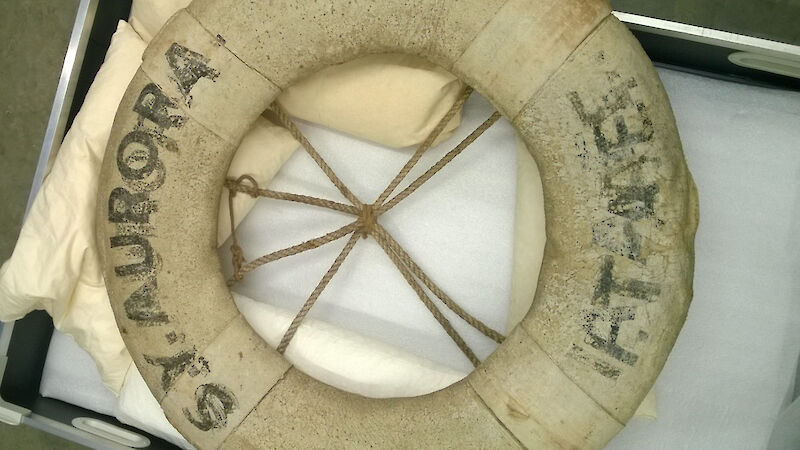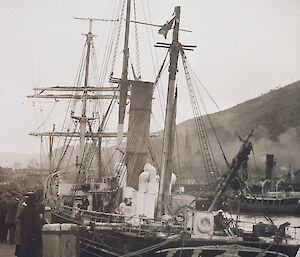The article mentioned that the Aurora’s Master, Captain R. J. (Jack) Reeves, had experienced a fairly rough voyage from Wellington, New Zealand, and went on to say that the Aurora, ”…after many voyages to the Antarctic, had now entered the more prosaic role of an ordinary merchantman on charter and instead of carrying discoverers, will in the near future, at all events, carry coal”. In Wellington, Shackleton had sold the Aurora to an American Company W. R. Grace and Co., with interests in Chile.
Such was the inglorious end to this faithful 41 year old polar ship, which had survived over 33 years of annual sea going voyages to the Newfoundland sealing and the Davis Strait/Greenland whaling grounds, in the ice strewn north Atlantic. Then followed a further eight years of sailing in the tempestuous Southern Ocean and Antarctic seas; firstly with Mawson’s Australasian Antarctic Expedition (AAE 1911–1914) and finally with Sir Ernest Shackleton’s Ross Sea Party — the East Antarctica component of his abortive attempt to be the first to cross the Antarctic continent during the Imperial Trans-Antarctic Expedition (ITAE 1914–1917).
Little did the crew of Australians, New Zealanders and UK merchant seamen realise that her impending voyage to the Chilean port of Iquique, and then on to Europe, with nitrates for the war effort, would write the final chapter of the “Heroic Age” of Antarctic exploration and discovery, with her subsequent loss with all hands off the coast of New South Wales.
The Aurora was opened for inspection and many people visited the ship. Such was the interest that the Newcastle Ferries Company was running a special quarter-hour service from the Market Wharf for those wishing to visit during the weekend. At the time of her departure from Newcastle on 18 April 1917, the Northern Times newspaper reported that £2113.1s.10d (in silver coin entry) had been collected for the Field Force Fund — a considerable sum for the times.
Three days into the voyage the Aurora was discovered to be leaking badly and returned to Sydney on 23 April. Her 500 tons of coal were off-loaded, and an inspection at Morts dockyard revealed substantial leaks behind the iron plates of her original icebreaker bow. Extensive and lengthy repairs were undertaken and finally in early June she returned to Newcastle to reload with coal.
The Aurora sailed again on 20 June 1917 and within days was hit by a southerly storm and disappeared with all hands. It was believed that the removal of the icebreaker plates and the dead weight of the coal had compromised the structural integrity of the ship. The only item found six months later was the Aurora’s lifebuoy with the faded letters “A.A.E.”, overwritten with the letters “I.T.A.E.”, signifying her proud association with the Mawson and Shackleton expeditions.
The lifebuoy was recently presented to the nation on the 100th anniversary of the ship’s loss by Mr John Hooke CBE, son of Mr Lionel Hooke (later Sir), the wireless operator onboard Aurora during part of Shackleton’s ITAE expedition.
On 20 June 2017, the ANARE Club held a commemorative ceremony at the Newcastle Cathedral, during which a memorial plaque was unveiled in memory of the Aurora and the 21 members of her crew — lost at sea.
David Dodd
Secretary, ANARE Club


